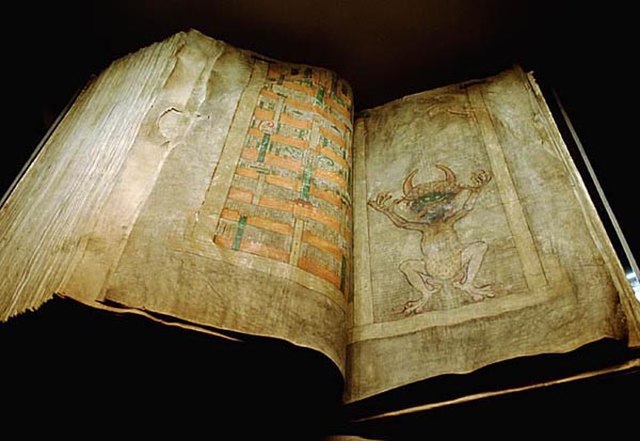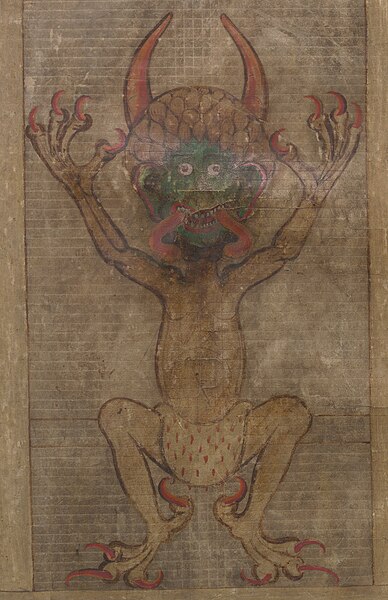The Codex Gigas is the largest extant medieval illuminated manuscript in the world, at a length of 92 cm (36 in). Very large illuminated bibles were typical of Romanesque monastic book production, but even among these, the page-size of the Codex Gigas is exceptional. The manuscript is also known as the Devil's Bible due to its highly unusual full-page portrait of Satan, and the legend surrounding the book's creation.
The Codex Gigas opened to the page with the distinctive portrait of the Devil from which the text received its byname, the Devil's Bible
Illuminated initial at the start of the Wisdom of Solomon
Illustration of the Devil, Folio 290 recto
Opening of the Gospel of Matthew
An illuminated manuscript is a formally prepared document where the text is decorated with flourishes such as borders and miniature illustrations. Often used in the Roman Catholic Church for prayers and liturgical books such as psalters and courtly literature, the practice continued into secular texts from the 13th century onward and typically include proclamations, enrolled bills, laws, charters, inventories, and deeds.
Illuminated manuscripts housed in the 16th-century Ethiopian Orthodox Church of Ura Kidane Mehret, Zege Peninsula, Lake Tana, Ethiopia
Frontispiece of the Maqamat al-Hariri (1237 CE) depicting a ruler in Turkic dress (long braids, Sharbush fur hat, boots, fitting coat), possibly Baghdad.
Page from a Latin book of hours, with miniatures of saints. Book of Hours of Alexandre Petau, 16th century, Rouen, well after printing had become more common.
The author of a manuscript at his writing desk. 14th century








